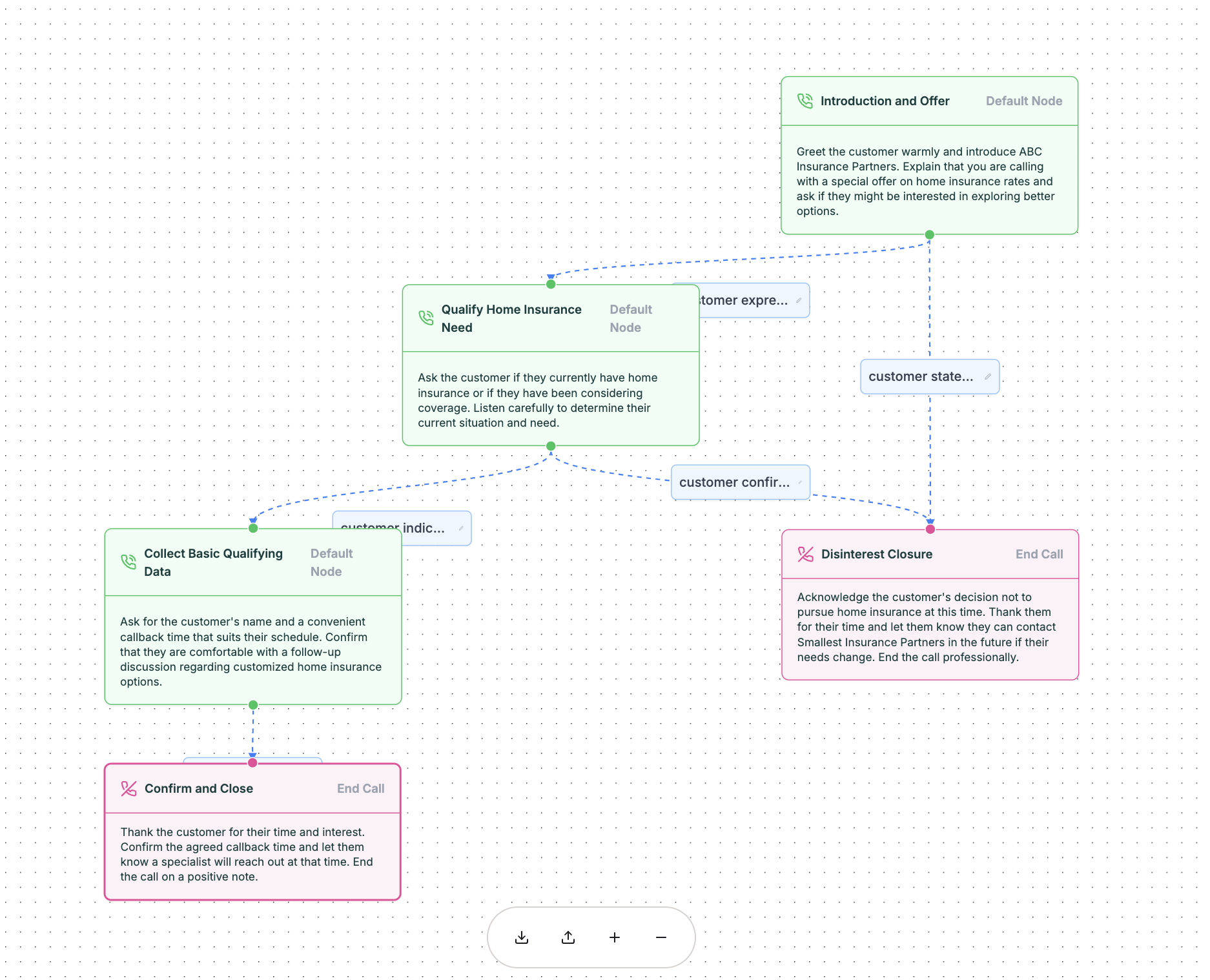Watch the above video or the below instructions to understand workflows better.

- In the first node Introduction and Offer, the agent introduces itself and tries to see if the customer is interested in buying home insurance.
- In case the customer is not interested, the agent will proceed to the Disinterest Closure node. In this node, the agent simply thanks the customer for their time and cuts the call.
- In case the customer is interested, the agent will proceed to the Qualify Home Insurance Need node. Here, the agent checks if the customer currently has home insurance or is looking actively. This identification of intent is extremely important.
- In case the customer says they are not looking or already have something, then the agent goes back to 2.
- In case the customer is looking, then the agent proceeds to the Collect Basic Qualifying Data node. In this node, the agent collects the name and a suitable time to call back.
- Finally, the agent proceeds to confirm the call back time and cut the call.
While it appears complex at first, when you realise that nodes are given goals and not exactly what
has to be spoken, it becomes extremely intuitive and simple to build the workflow.

